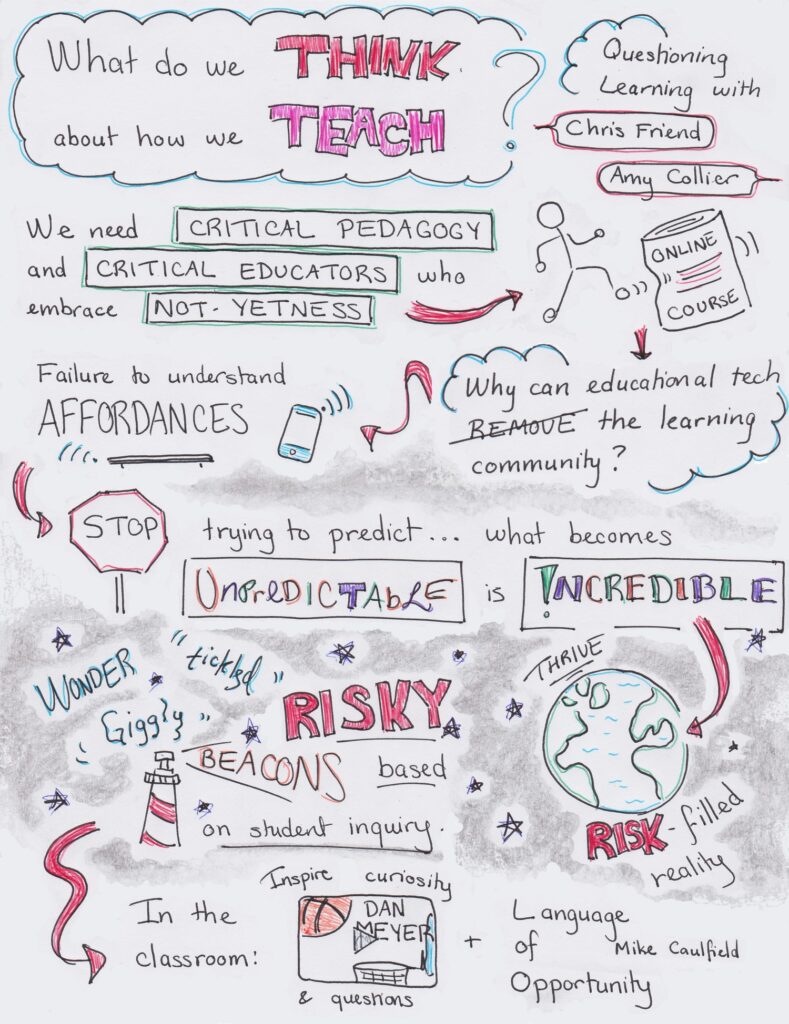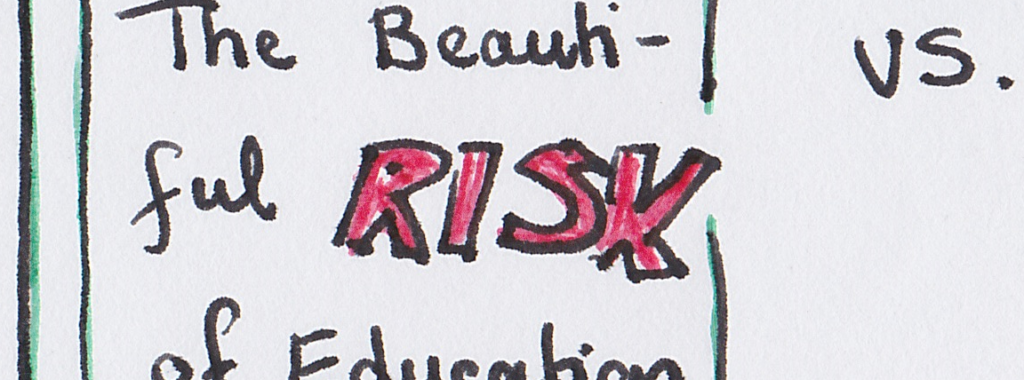UPDATE: Please note that the reflection is based on the original Sketchnote. A new one has been posted based on suggested improvements. Original Sketchnote can be downloaded in the link below the new Sketchnote.
I listened to the HybridPod episode, “Questioning Learning”, with Chris Friend and Amy Collier. They discuss the idea of “not-yetness” and how it relates to Critical Digital Pedagogy, particularly how it counters over-structured online learning. I decided to use a Sketchnote to visualize the key ideas of this podcast.

Because a podcast is an aural medium, I thought a Sketchnote would help provide imagery while maintaining the flowing nature of a conversation. At first, I considered using an infographic, which also makes use of simplified graphics and words to make a point. However, I had specific pictures in mind when it came to this podcast, and websites like Canva were not able to provide exactly what I envisioned. Using a Sketchnote meant my images were only limited by my (meagre) artistic ability, not website functions and options.

https://gph.is/2RyoSCD
One of the ideas I wanted to draw attention to is Amy’s concept of “not-yetness” and risk. Although it never occurred to me to view my own educational experiences from this perspective, I felt a strong connection once Amy and Chris elaborate on the idea. As a student, I often got caught up in what was the “right” answer and did not want to gamble with my marks. The wonder and awe that Collier mentions was forgotten. As an educator, I imagine it would be difficult to take professional risks as well. We can fall into the trap of teaching content as if it were items on a grocery list – check, they’ve learned this idea, check, they can explain this term. This is especially true for online courses, where, as Amy laments, “it is somehow okay” to over-structure the course.
I did my best to emphasize the idea of risk in the Sketchnote by using the same bright, red, font each time it appears. I wanted the word to stand out from surrounding text and pictures since it was one of the main ideas of the podcast.

Another topic of the podcast that stood out to me was the concept of asking questions. Right off the bat, Amy explains critical pedagogy as something which “encourages us to ask questions about what we’re doing, to not make assumptions…” Although it is not mentioned explicitly, asking questions of ourselves as educators is an aspect of personal reflection. From an academic, I am sure my fellow classmates can agree that reflection has been impressed upon us from Day 1. If we do not take time to step back and think about what we are teaching, how we are teaching it, and why we are teaching it, our methods can get stale and we lose the ability to inspire our students.

https://gph.is/g/ZYG2gpE
Of course, education is not just about teachers asking questions of themselves. Amy also talks about spurring students to ask questions about what they’re learning. She goes as far as to suggest that learning outcomes could be big questions we want students to ask themselves, or beacons. This sounds like something I would want to implement in my own classroom. It would encourage students to interact with what they learn rather than be passive receivers of information, and would make for good review questions before a test.
Since asking questions is such an integral part of Critical Digital Pedagogy, I thought it would be a good idea to formulate my Sketchnote title and topic transitions into questions. I hope they serve as their own little beacons as you go through the note!

